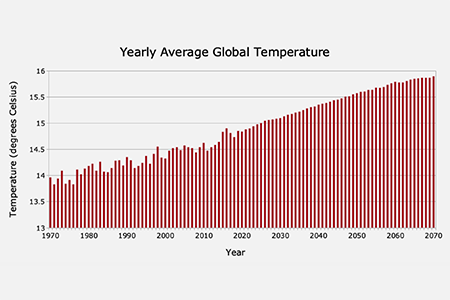


This module introduces students to two types of data sources: data derived from observations and data produced by models. Students will learn about the differences and similarities between these two data sources, how to recognize each, and how each type of data is used by scientists to make predictions. Students will also explore the methods biologists, ecologists and other scientists use to estimate the sizes and compositions of populations of organisms by observing limited samples from those populations. Students will investigate these methods in familiar environments, including a strawberry patch in a garden and birds at a feeder, before applying the concepts to marine habitats. Students will conduct “virtual dives” to observe simulated marine habitats generated by models and by observational data. Students will use these ideas to estimate future populations of tuna and of lobster.
The following are all the resources for implementing this module:
 Module Activities
Module Activities VES-V Software Tutorial
VES-V Software Tutorial Student Data Worksheets
Student Data Worksheets NGSS aligned to this module
NGSS aligned to this module Presentation Graphics Used in this Module
Presentation Graphics Used in this ModuleThe VES-V is visually driven in nature and supported by the third-party "perspectx.com." Color contrast, assistive technology support, and alternate text may be unsupported.
The following activities within the Observations & Models Module may be completed without the use of VES-V software. As some of these were originally designed to be used with it, they will require some adaptation by the educator to make them accessible for students with disabilities.
We welcome your feedback. Please let us know if you encounter accessibility barriers on any of our education content: nos.info@noaa.gov
Social